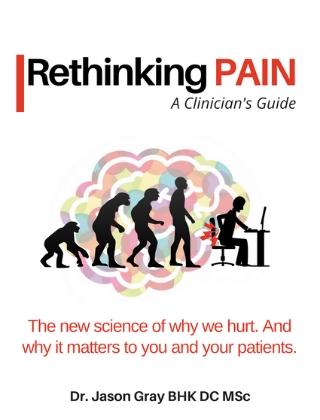Free eBook
A Simplified Guide To Understanding Modern Pain Science
What you really need to know to understand pain and improve patient care.
What You’ll Learn…
At first glance pain seems like a straightforward subject. You stub your toe or strain a muscle and you hurt. But we now know things are a bit more complicated than that.
Sure there may be pain with injury, but this simplified view doesn’t help us to understand why symptoms often persist long after that injury has healed. Nor does it answer why pain often just seems to just show up for no reason at all.
In a search for answers, modern pain science has led us to understand pain in a completely new way.
So we’re going to look at this modern view of pain… but from a clinician’s perspective. This means we’re going to forgo some of the more detailed mechanisms and biochemistry. Instead, we’re going to use a more conceptual lens to better understand why pain occurs and why the pain response is often exaggerated and hyper-active.
As a treating clinician or therapist this is what you (and your patients) really need to know to better understand the problem of pain and improve patient care.
Here’s What We’ll Cover…
- Why we need to rethink (but not abandon) the role of tissue damage, injury, and “faulty” biomechanics with respect to pain
- An evolutionary perspective on the pain system… Why pain is meant to be protective but it’s often not
- How the brain can learn to hurt… And what to do about it
- The critical role of fear and patient beliefs… And how the everyday clinician can overcome these barriers to treatment
- Why how we move is still a critical part of patient care… but why we need to rethink what optimal movement is and how to get it

